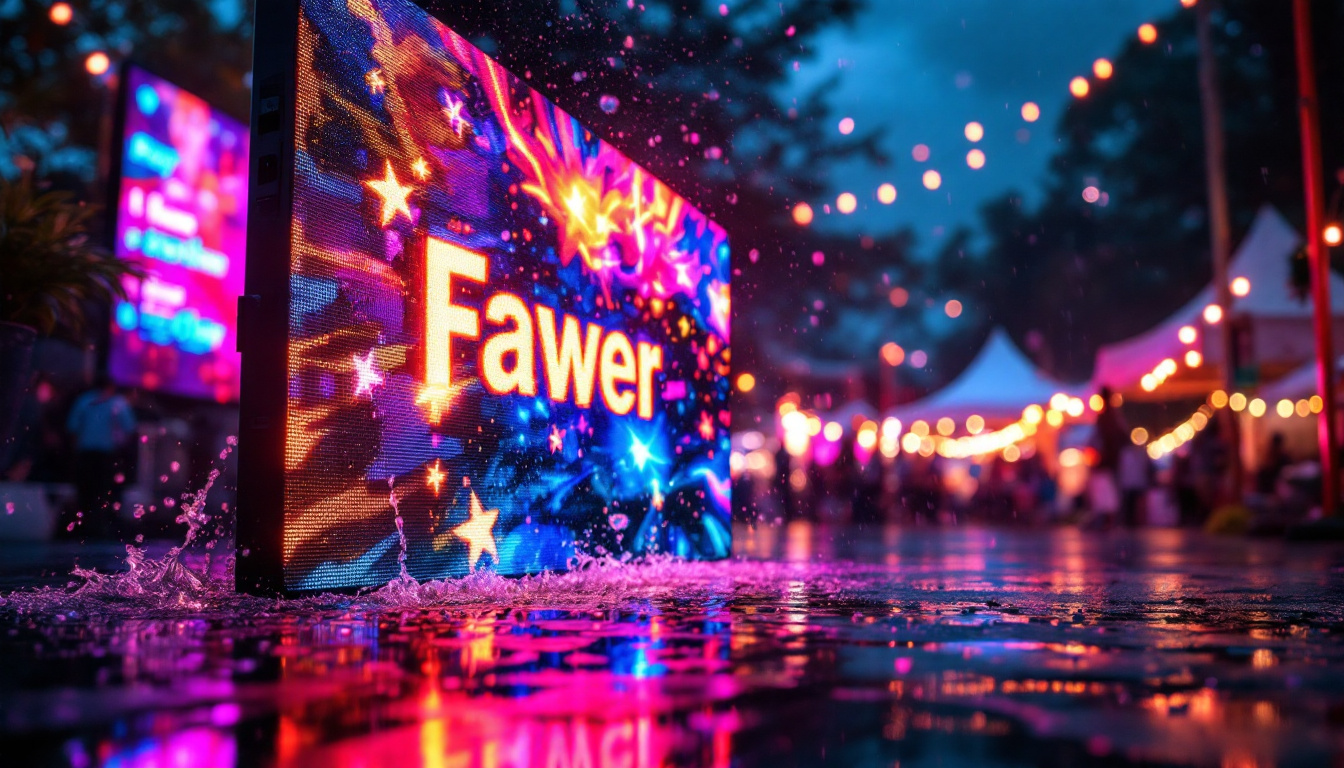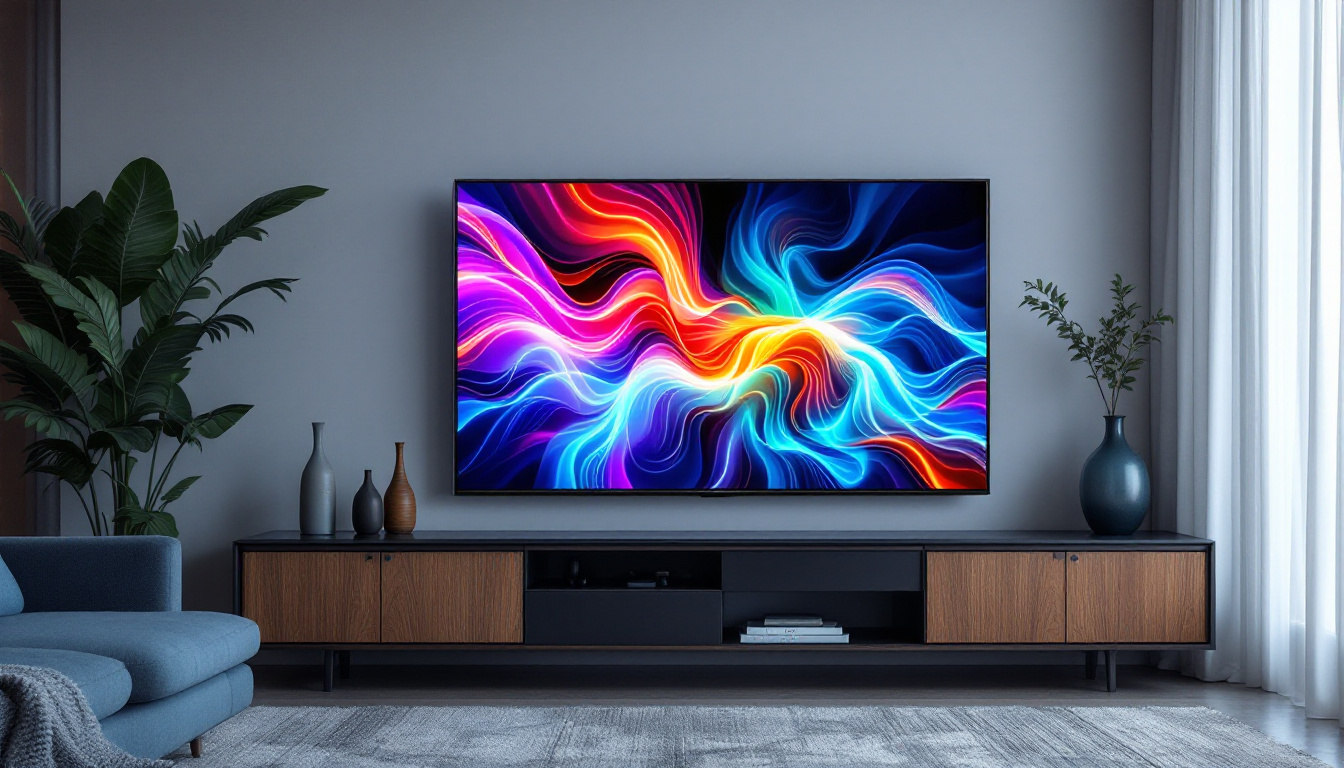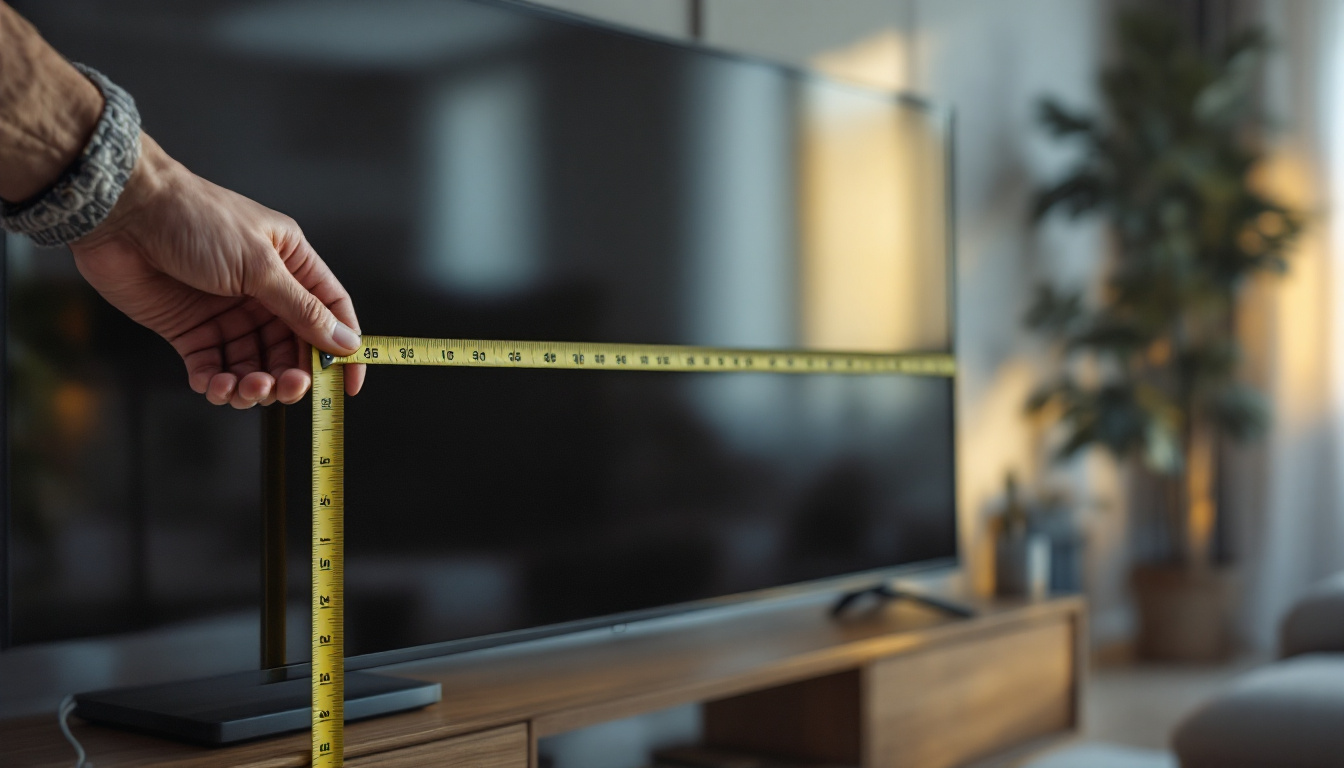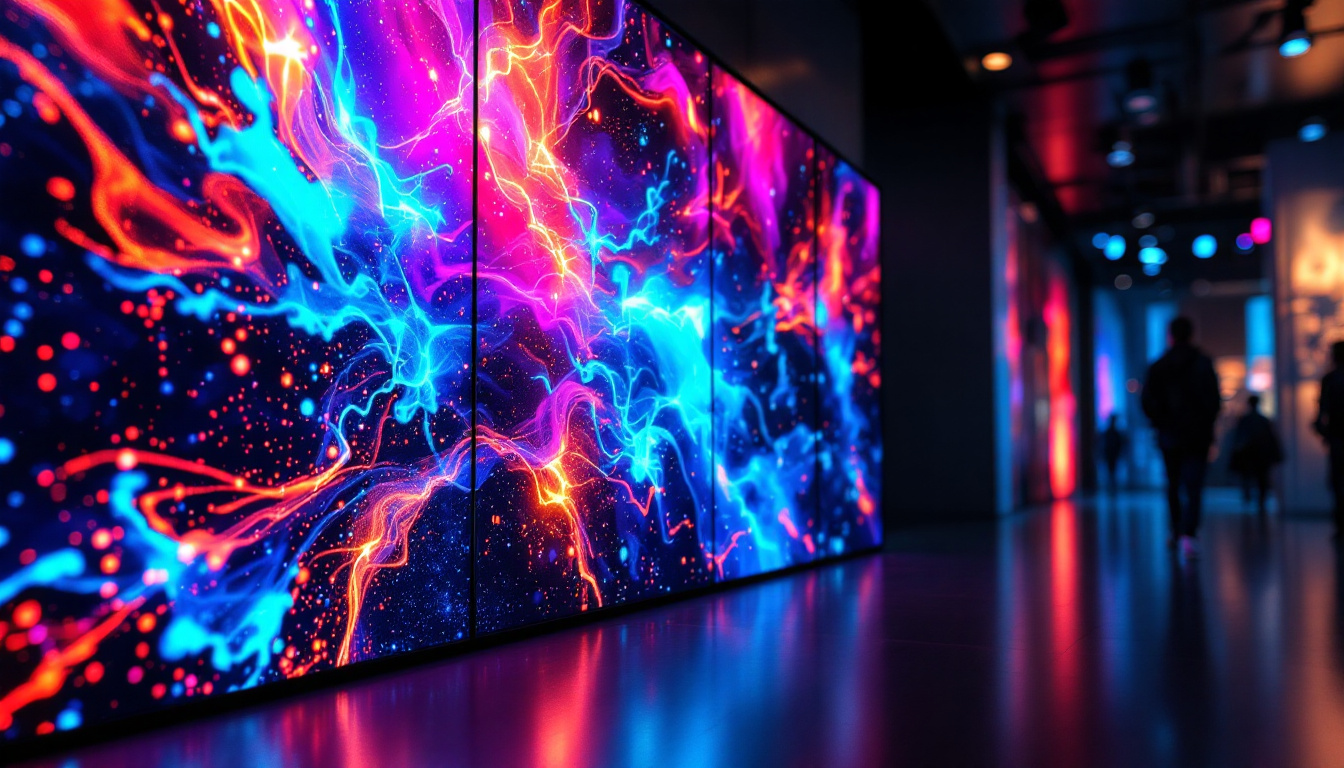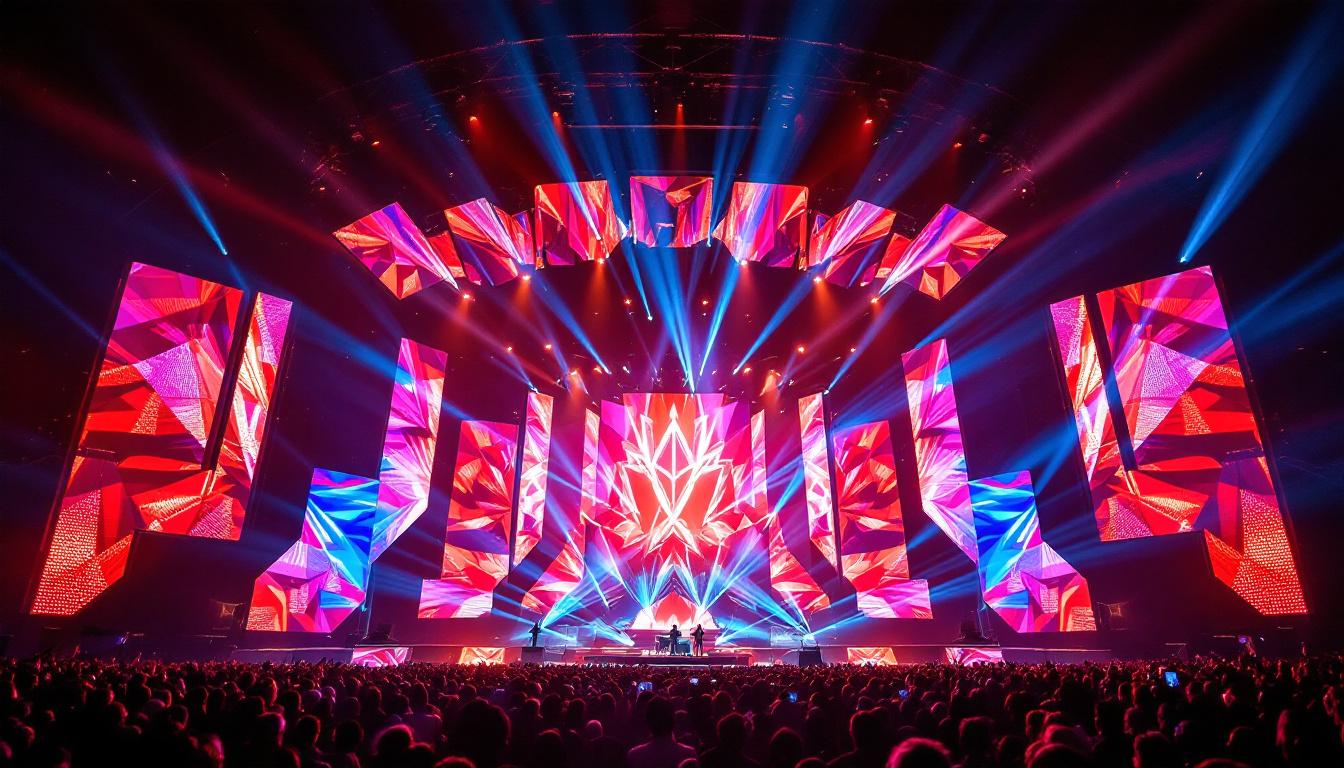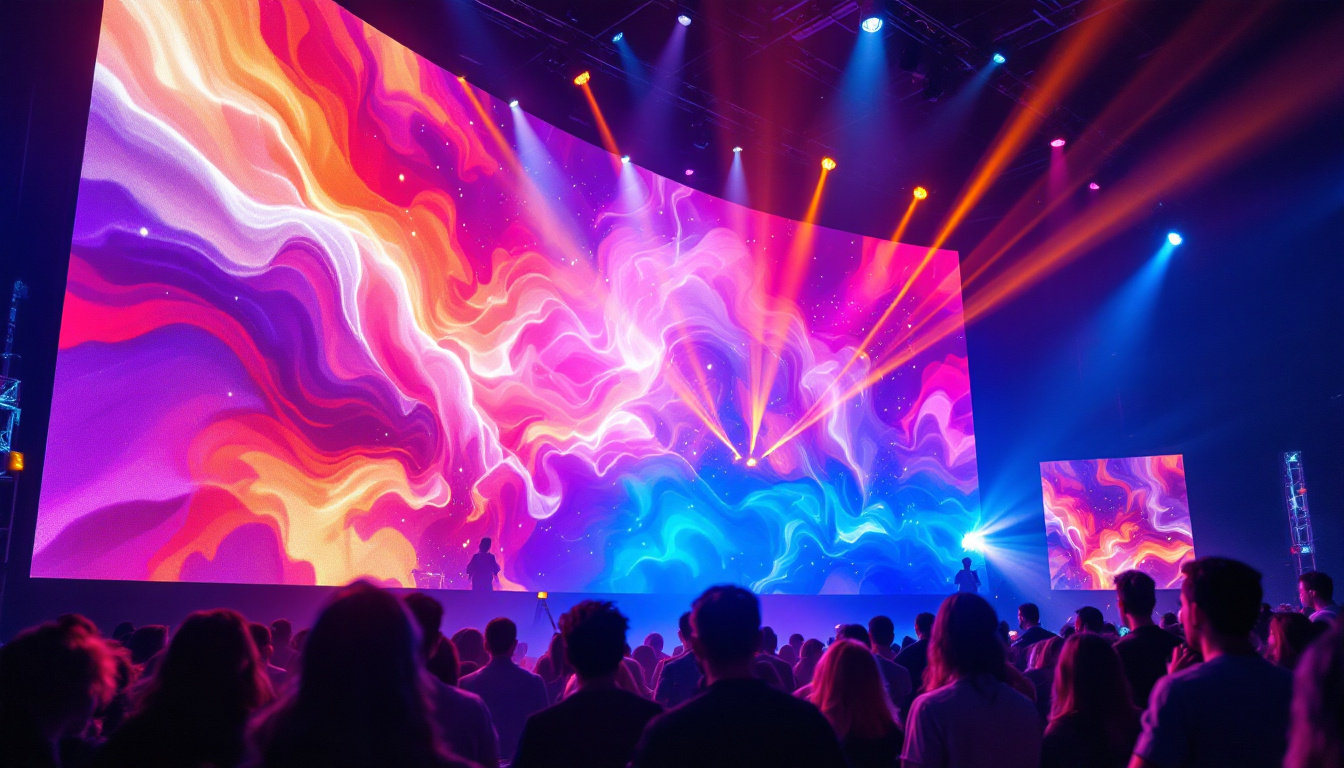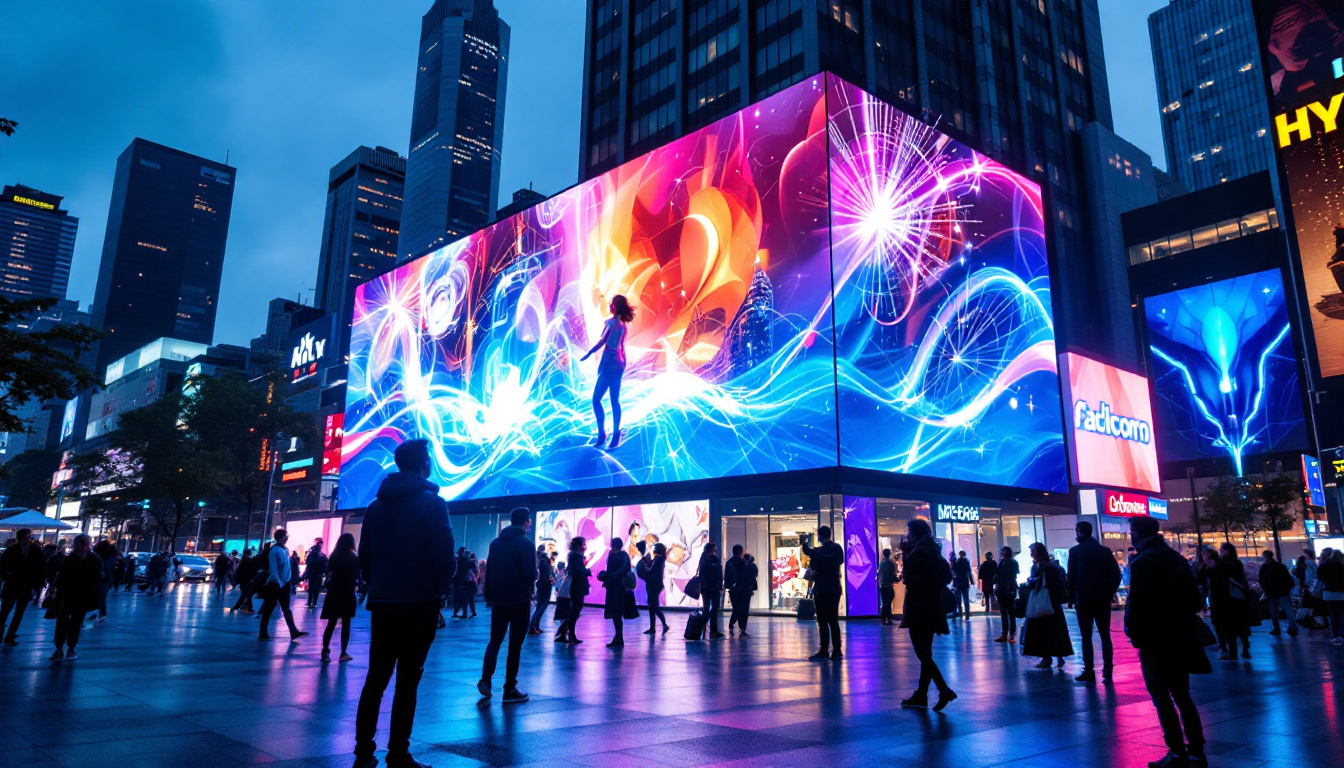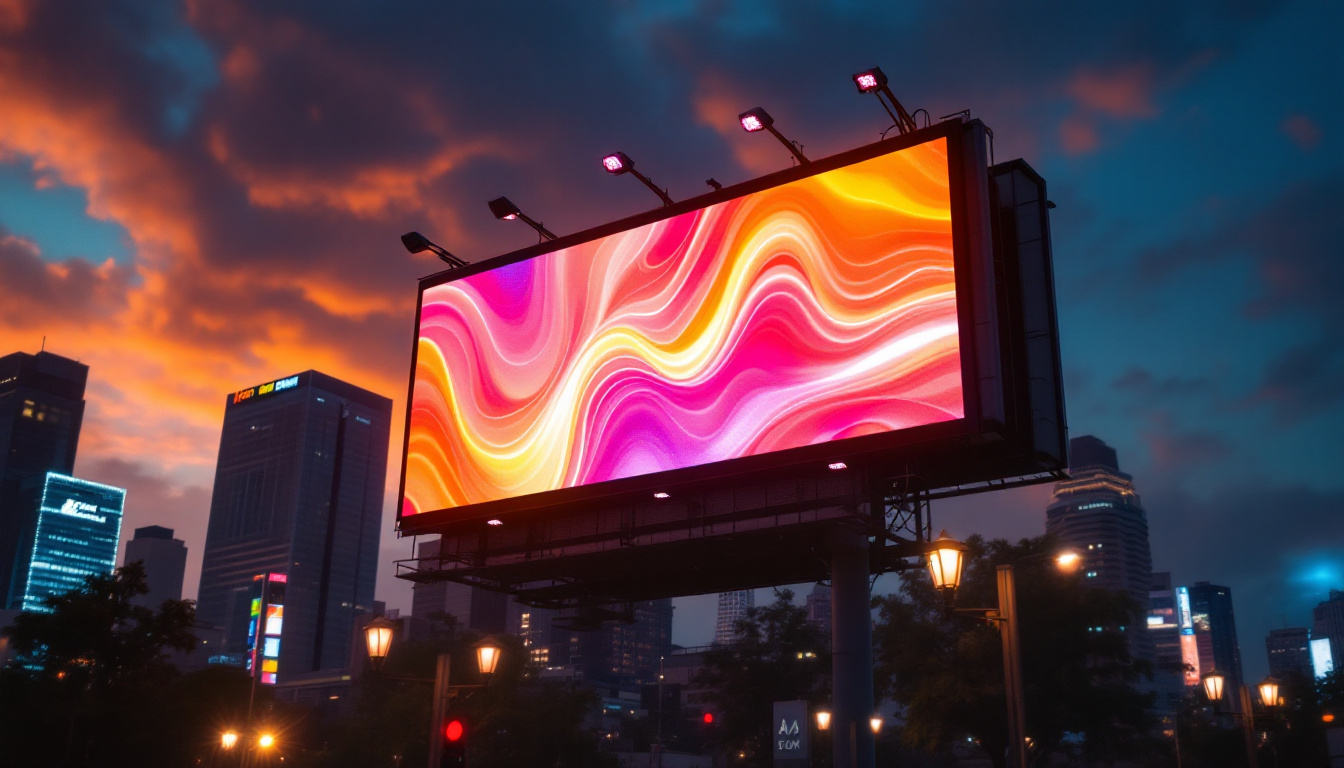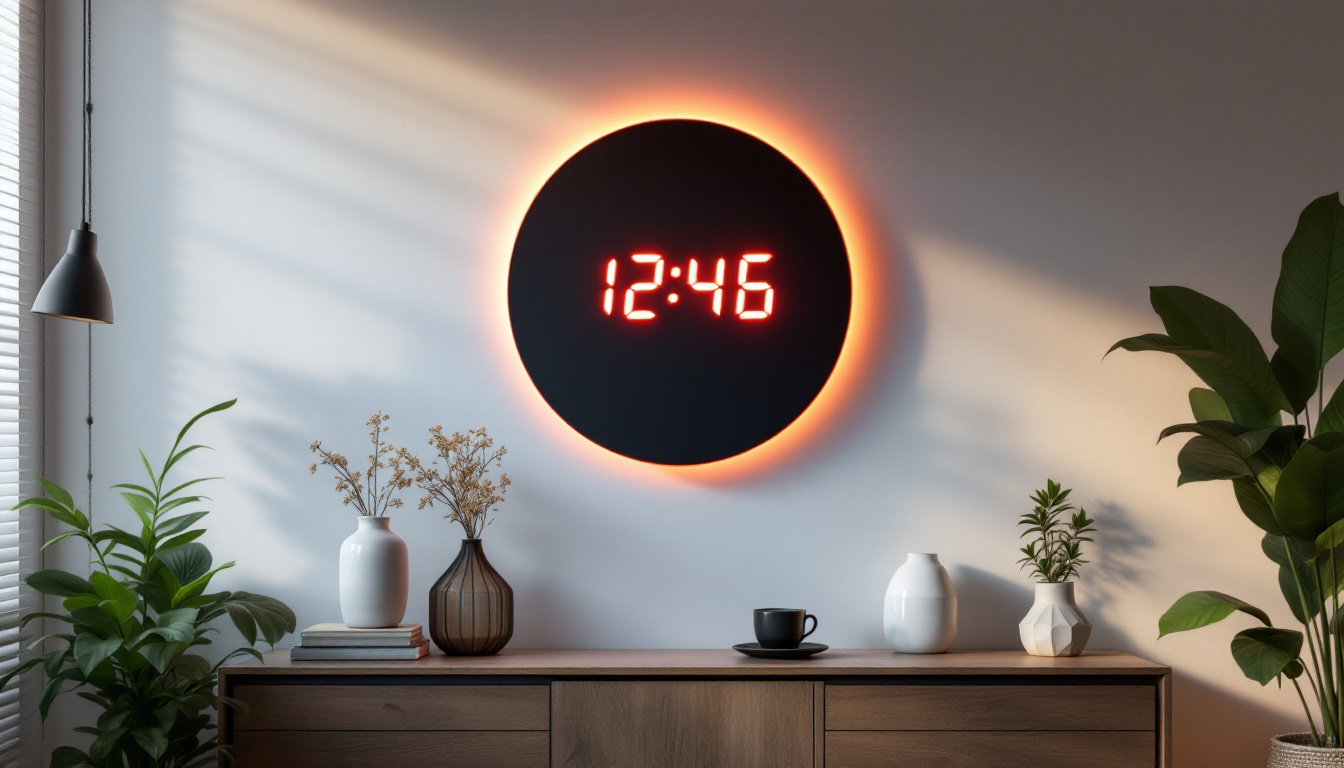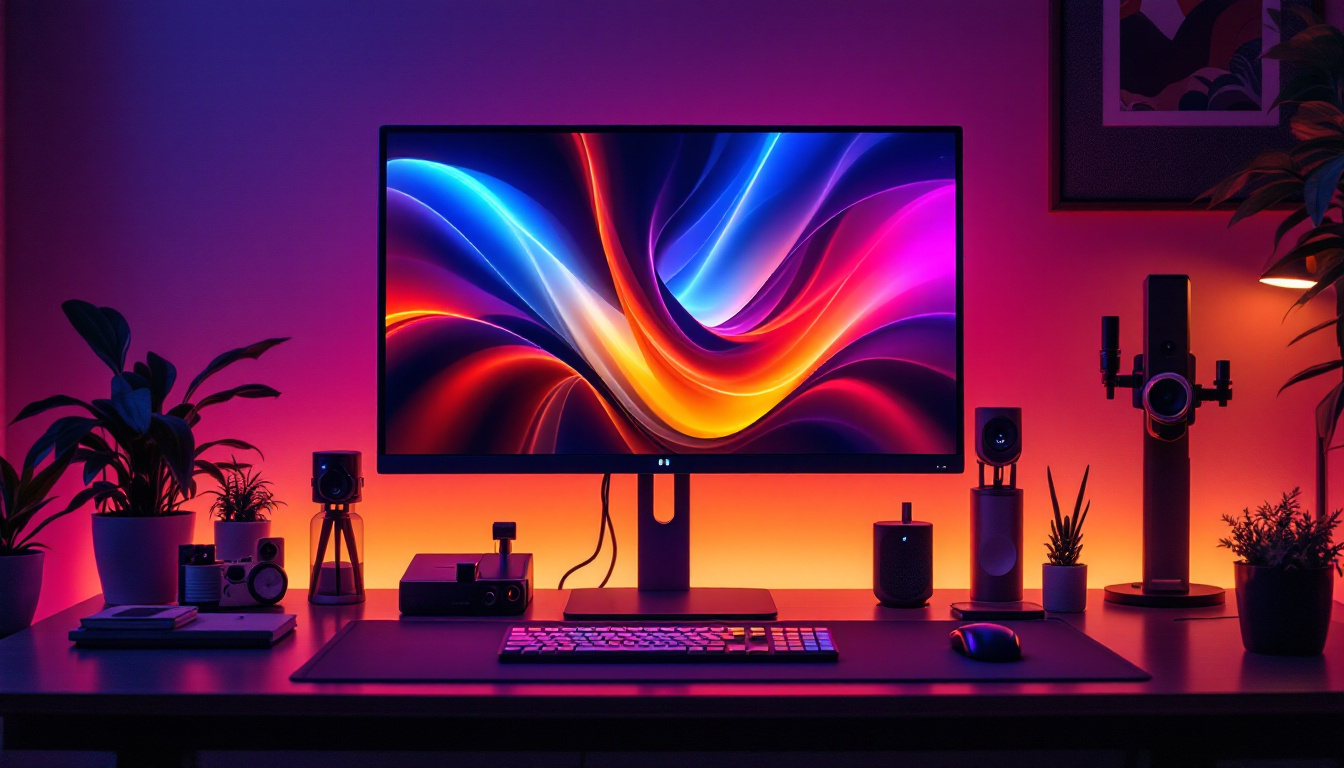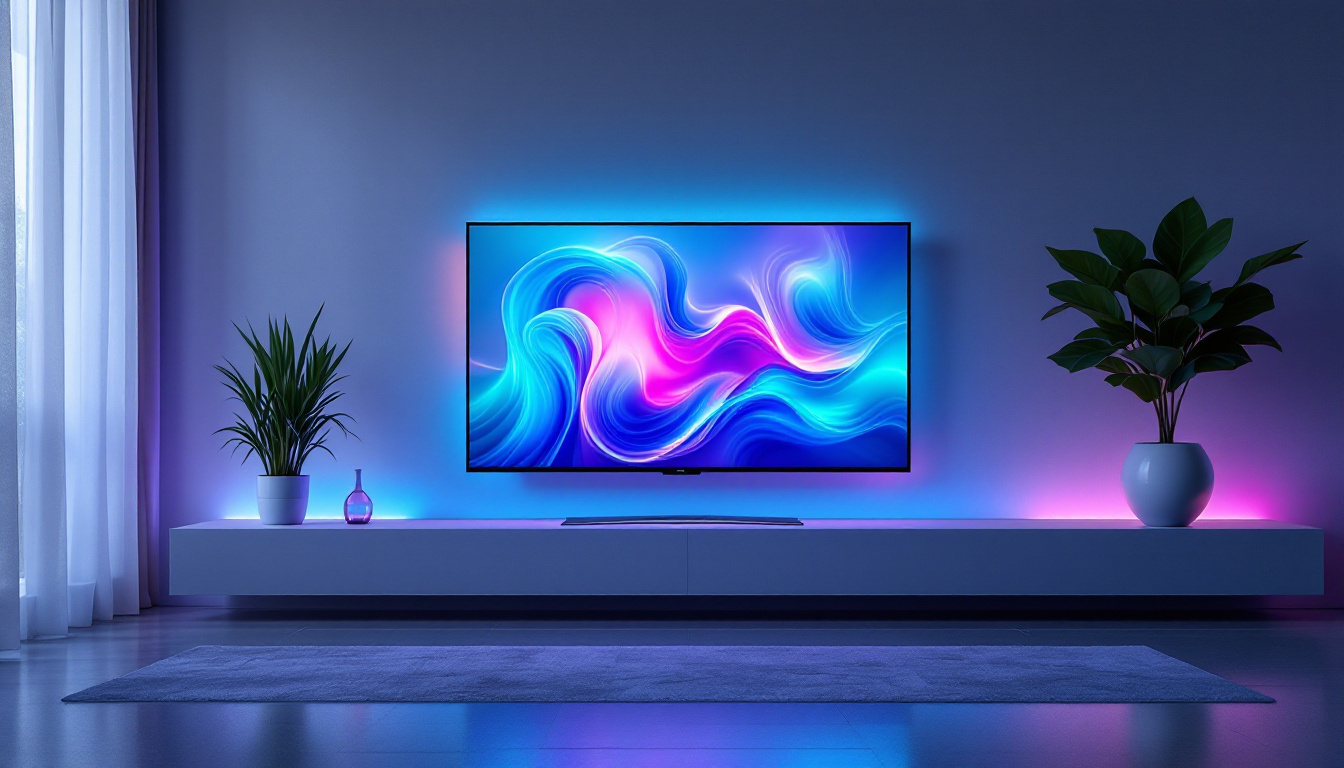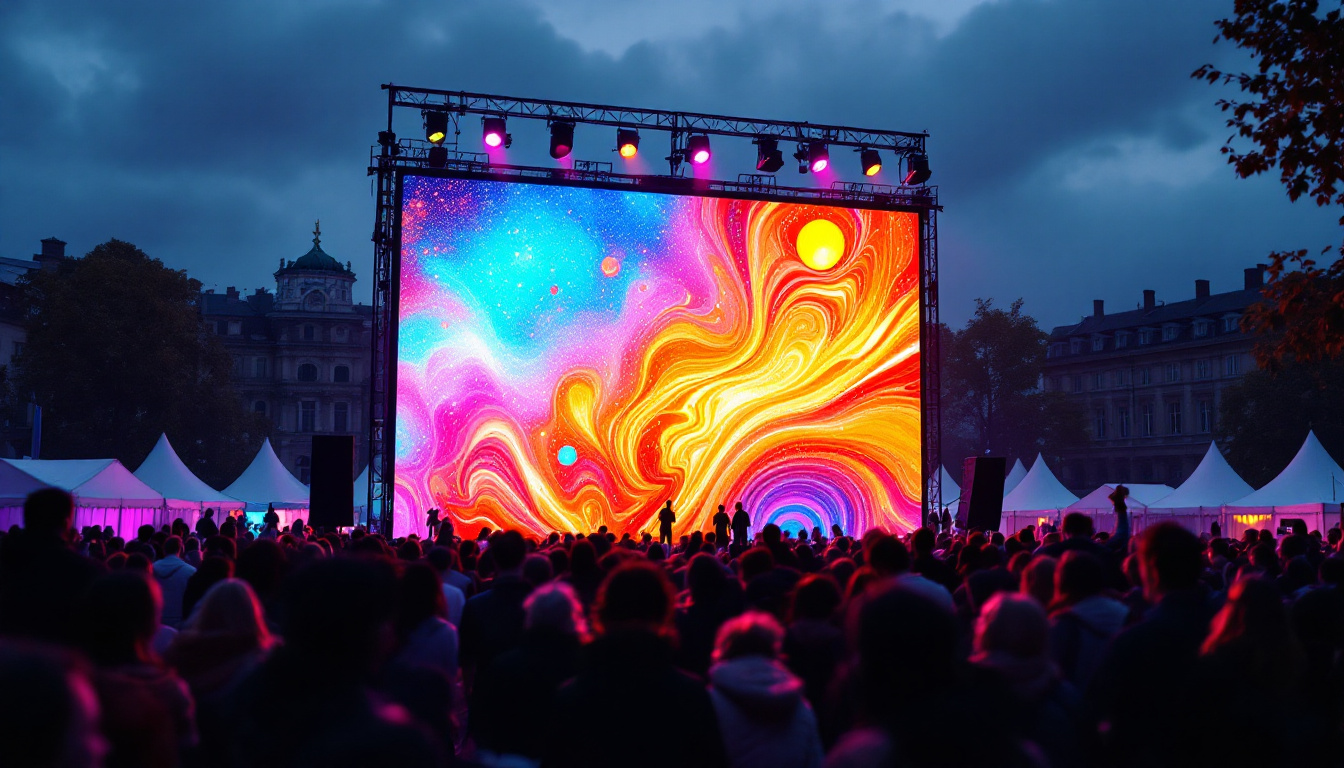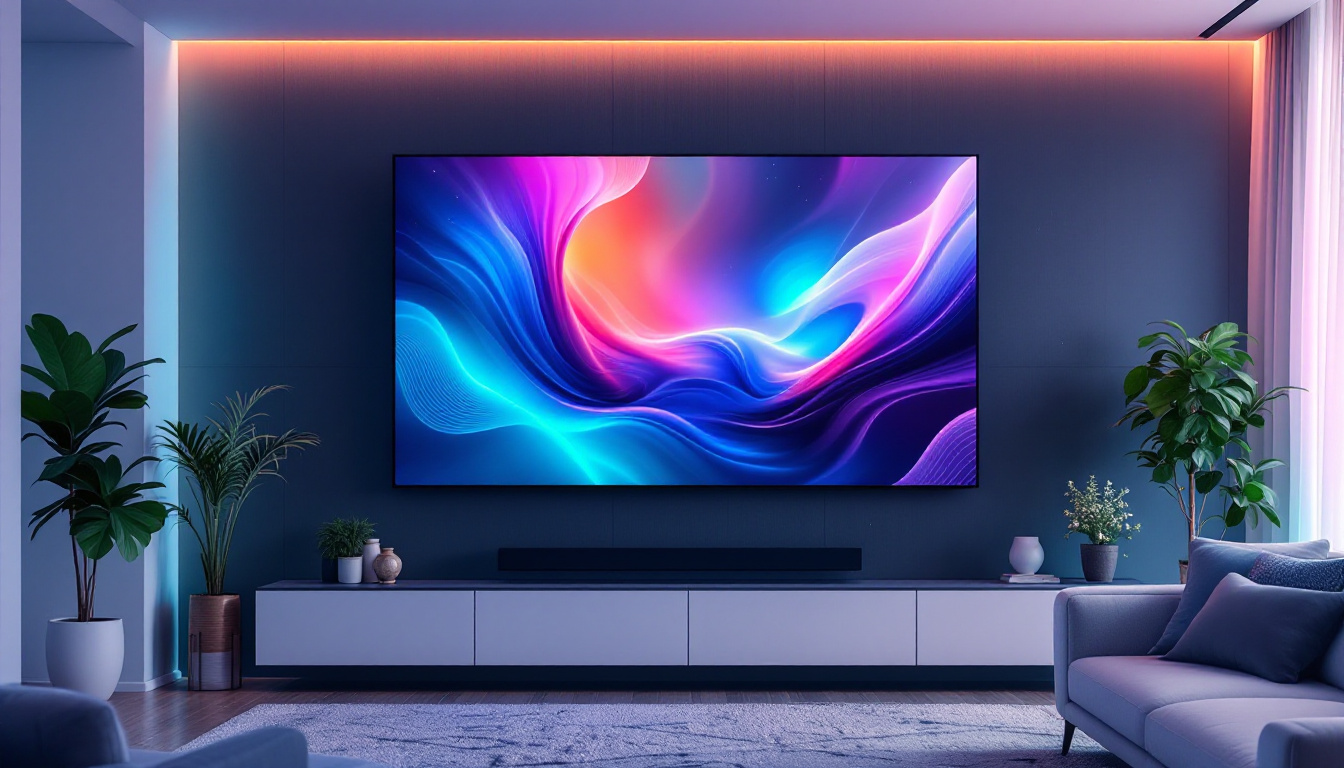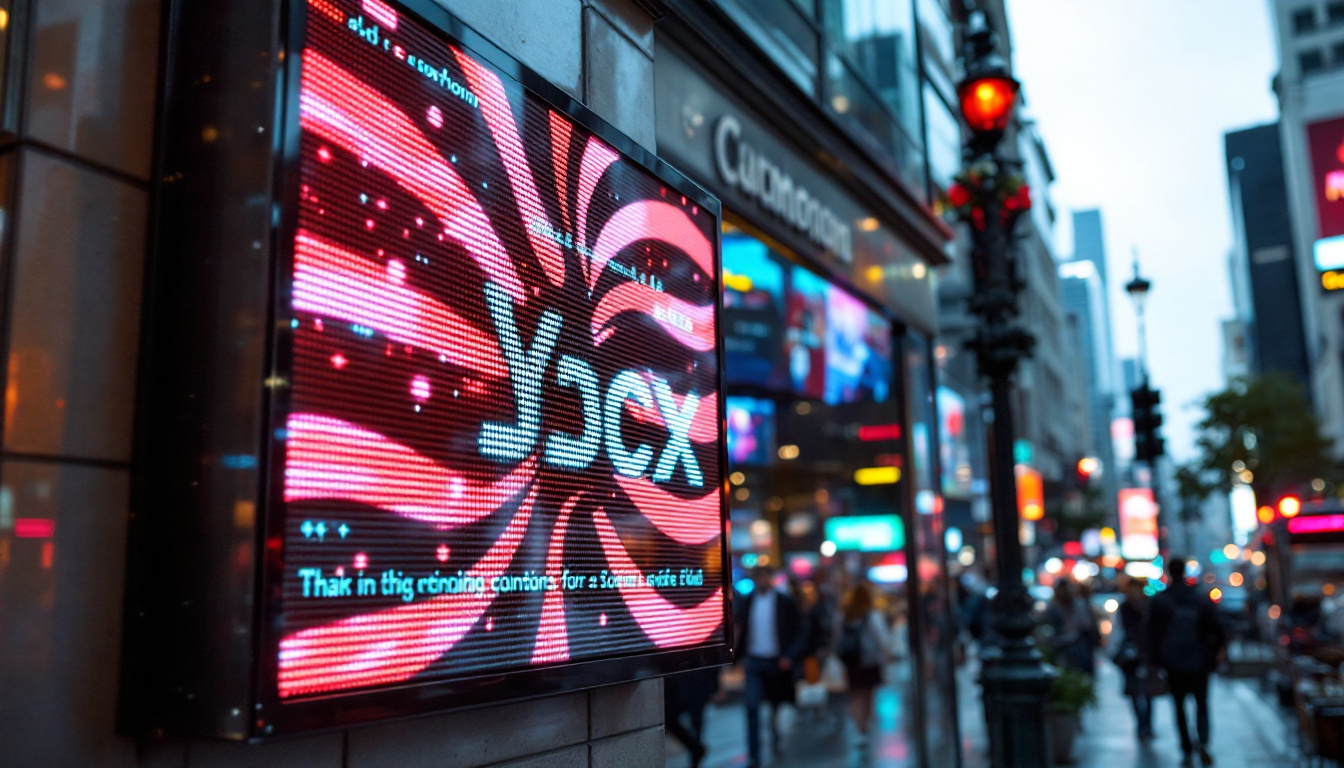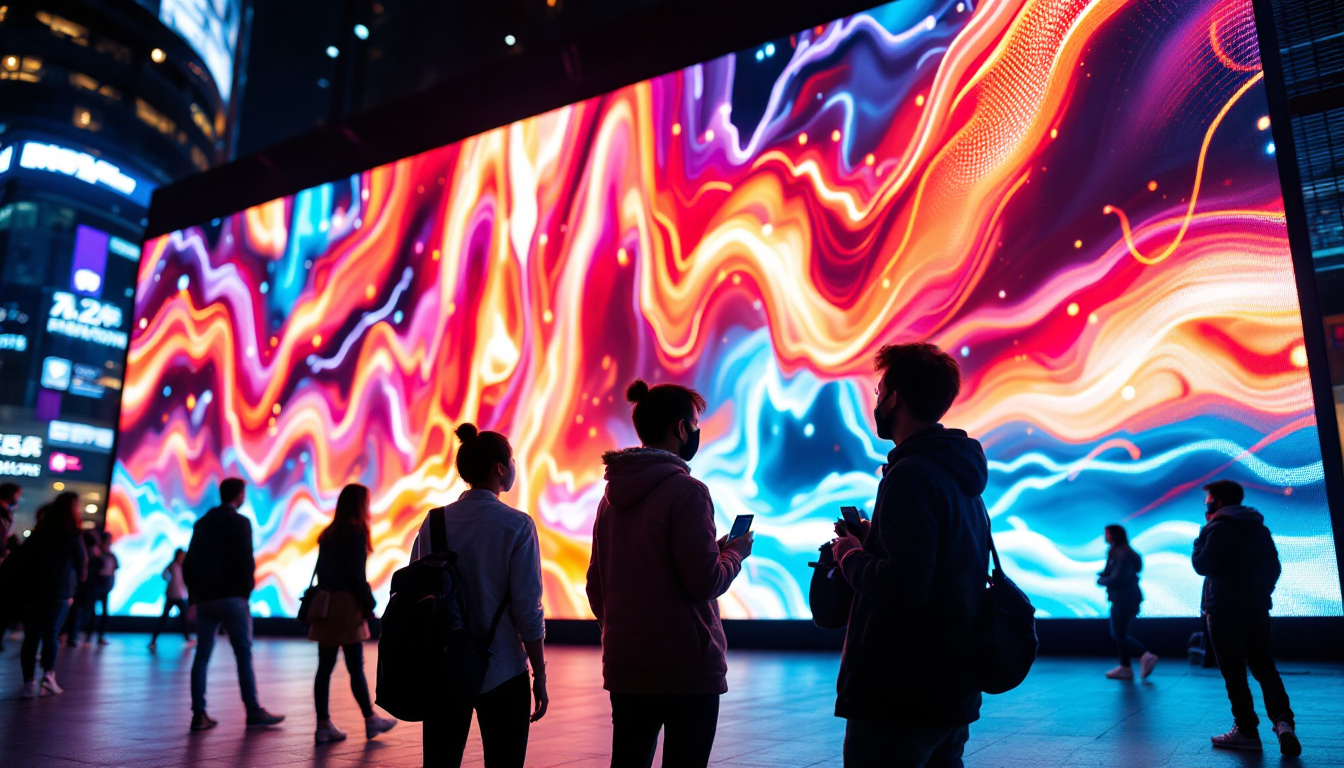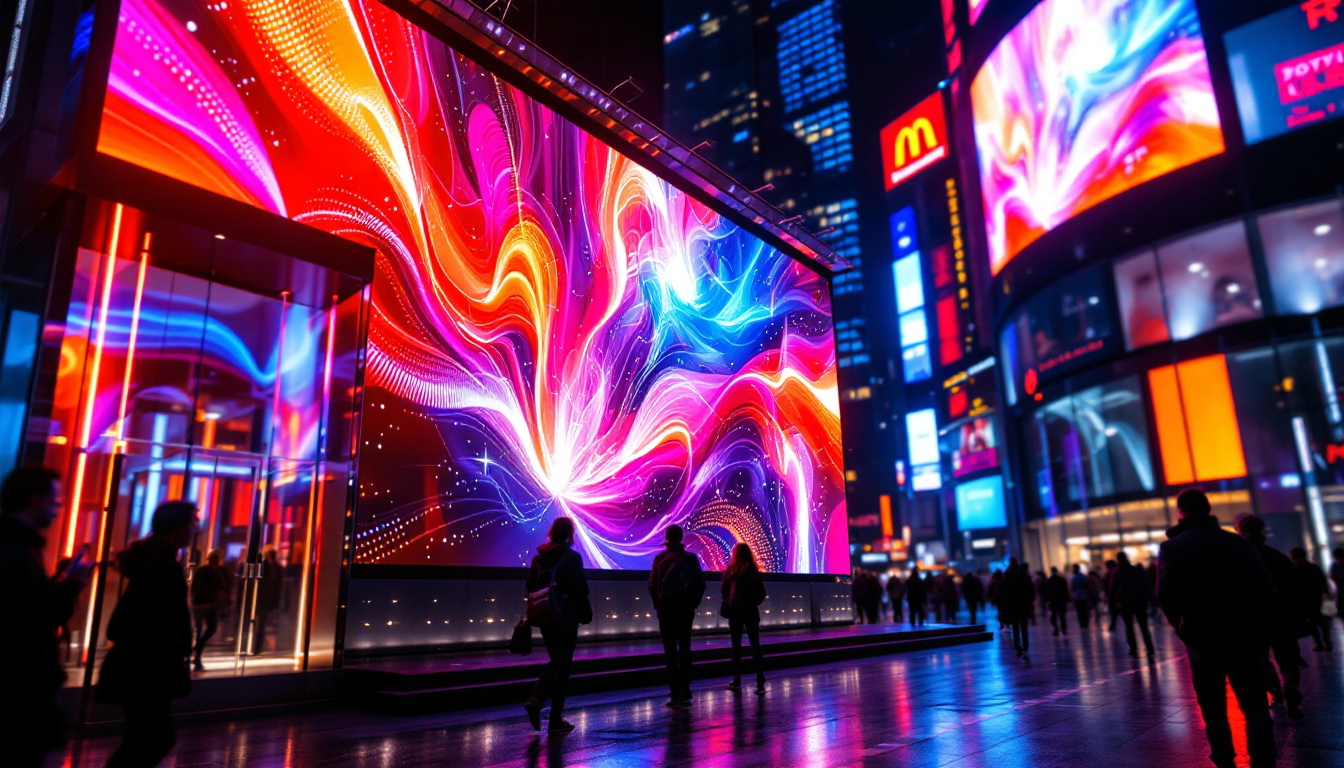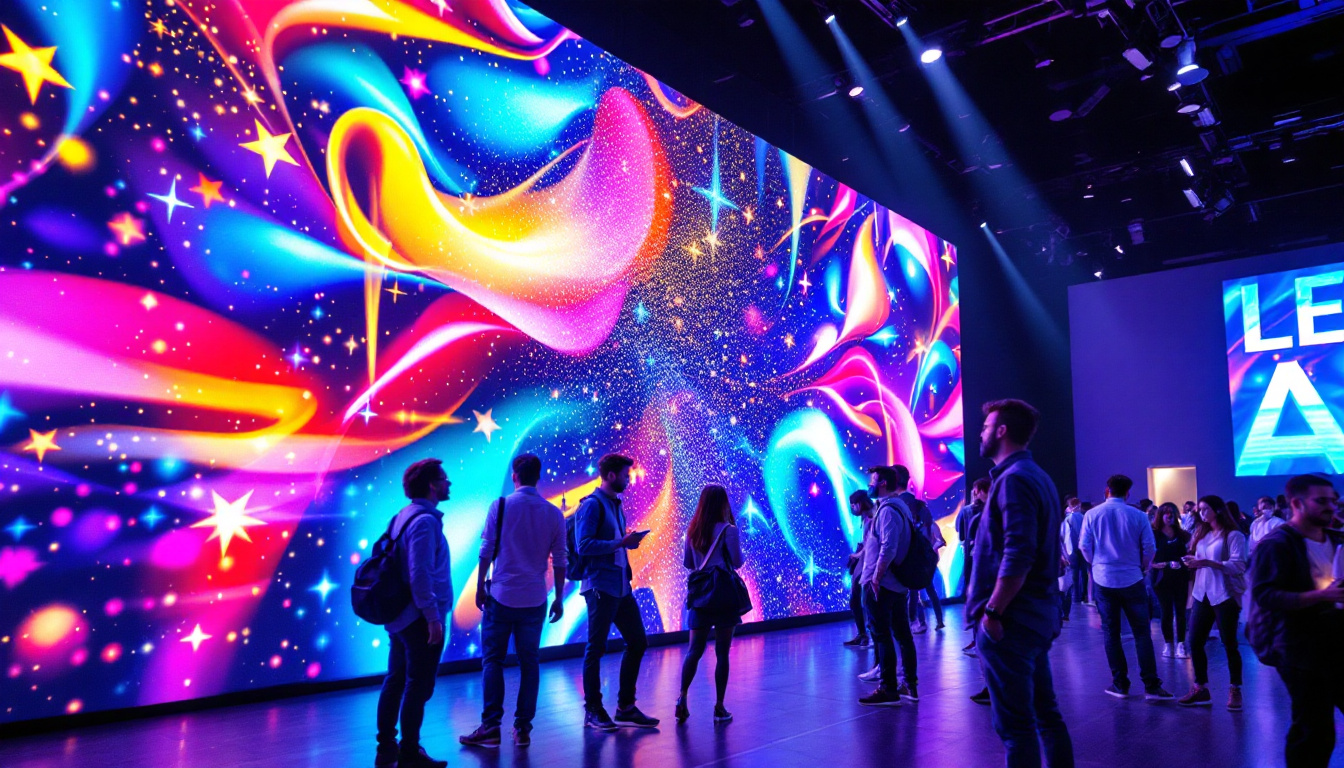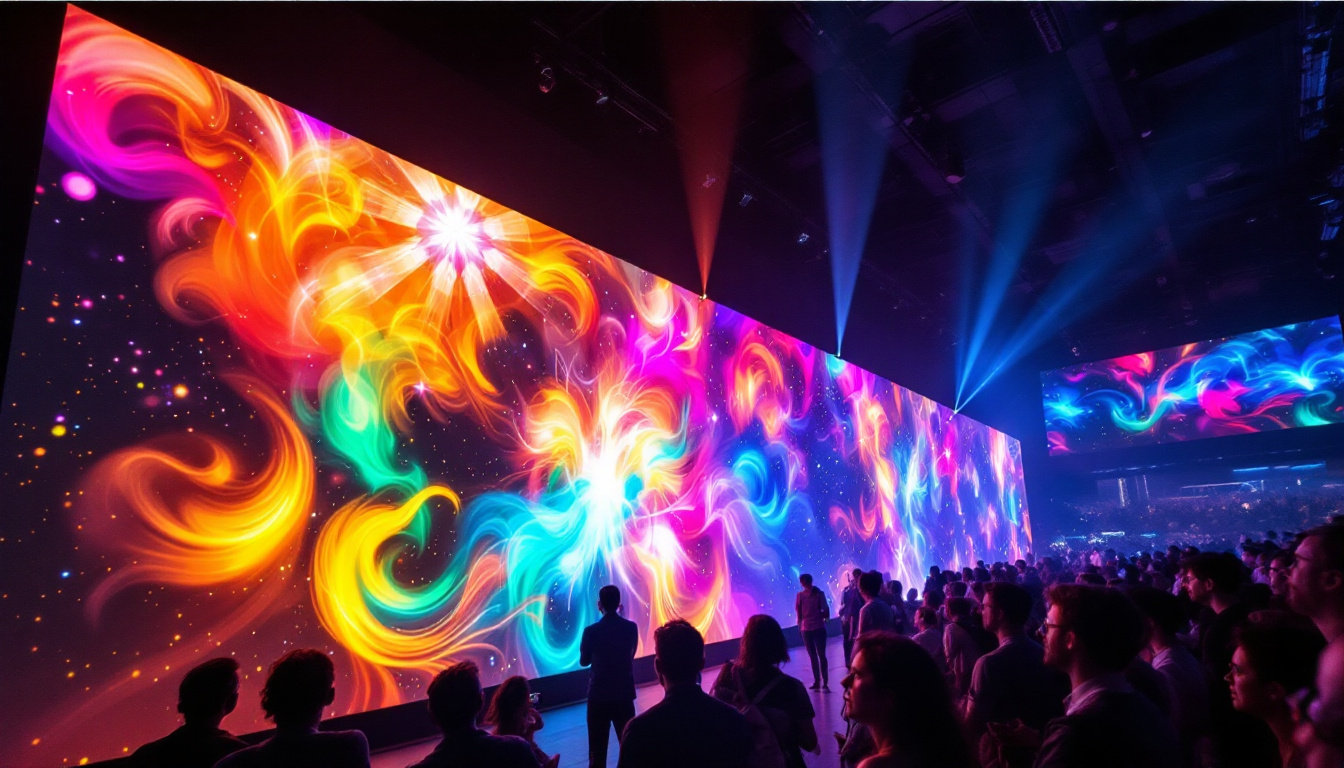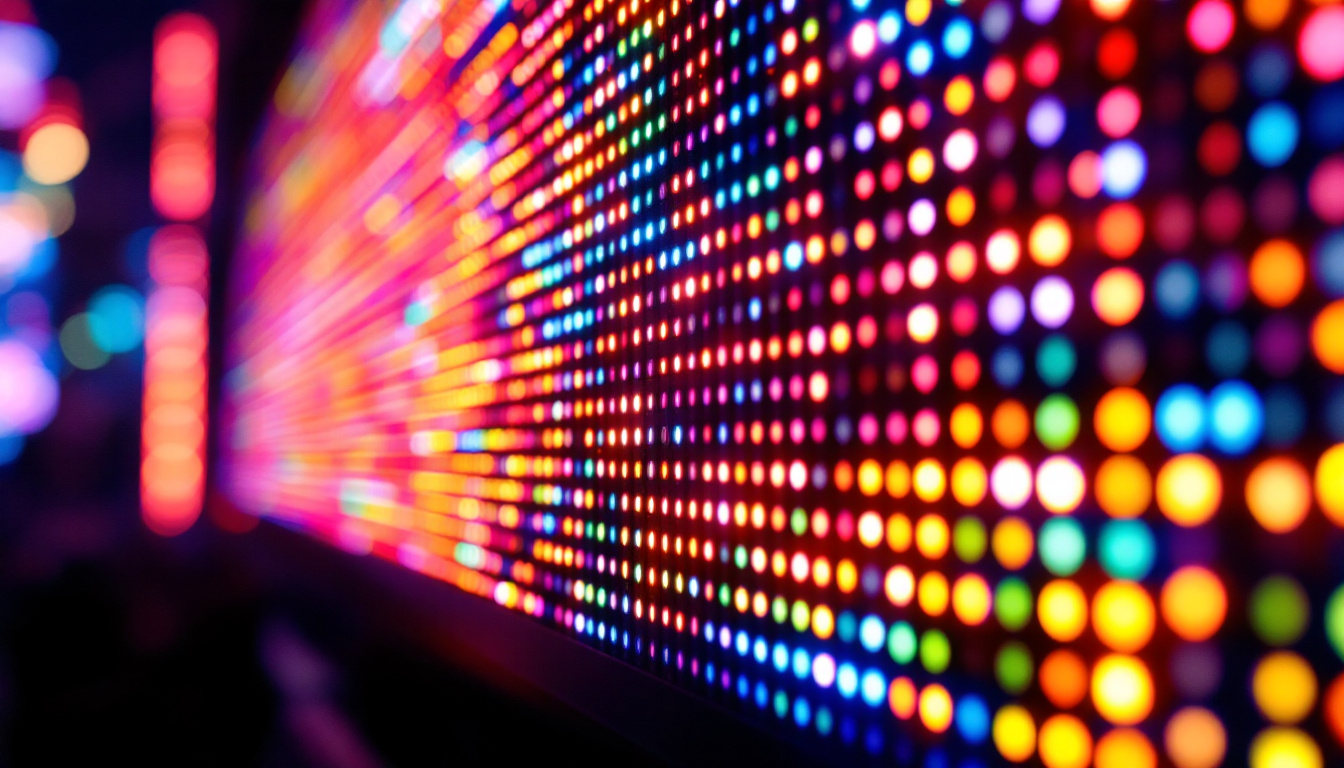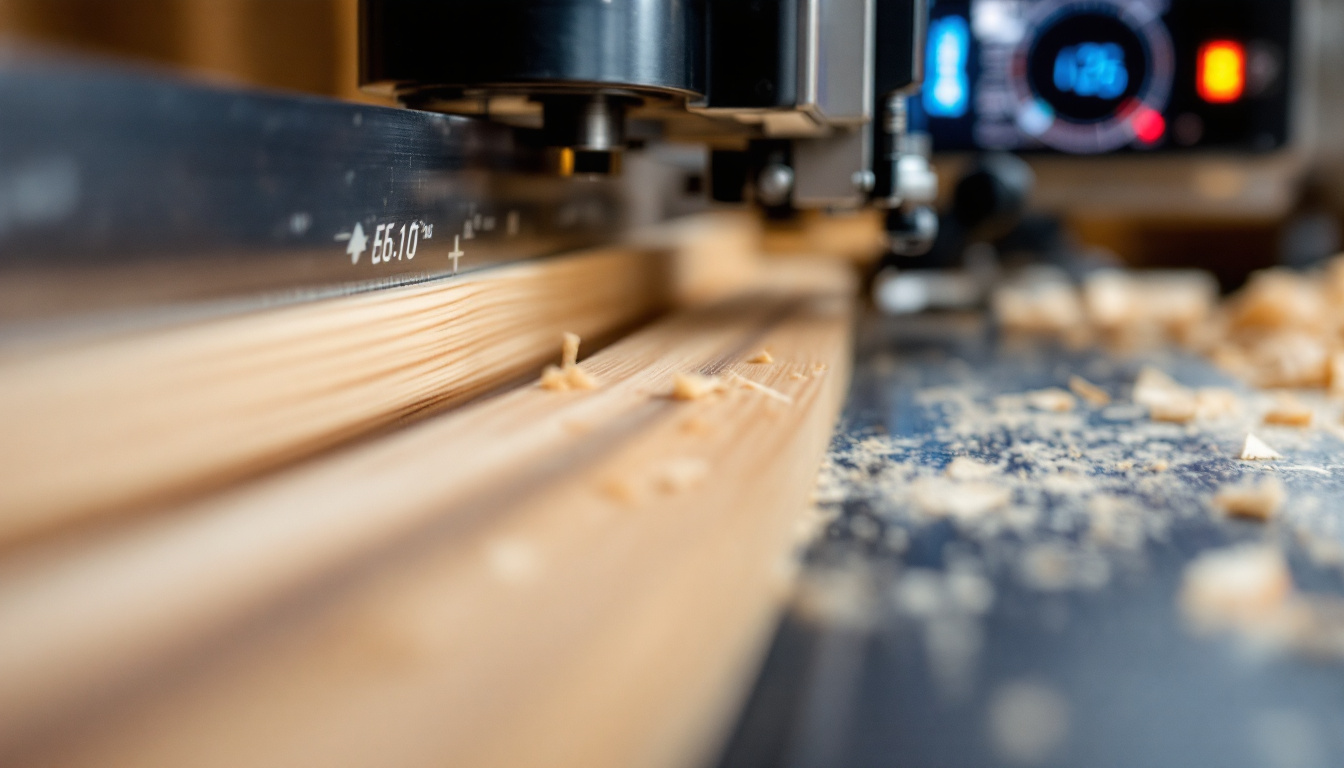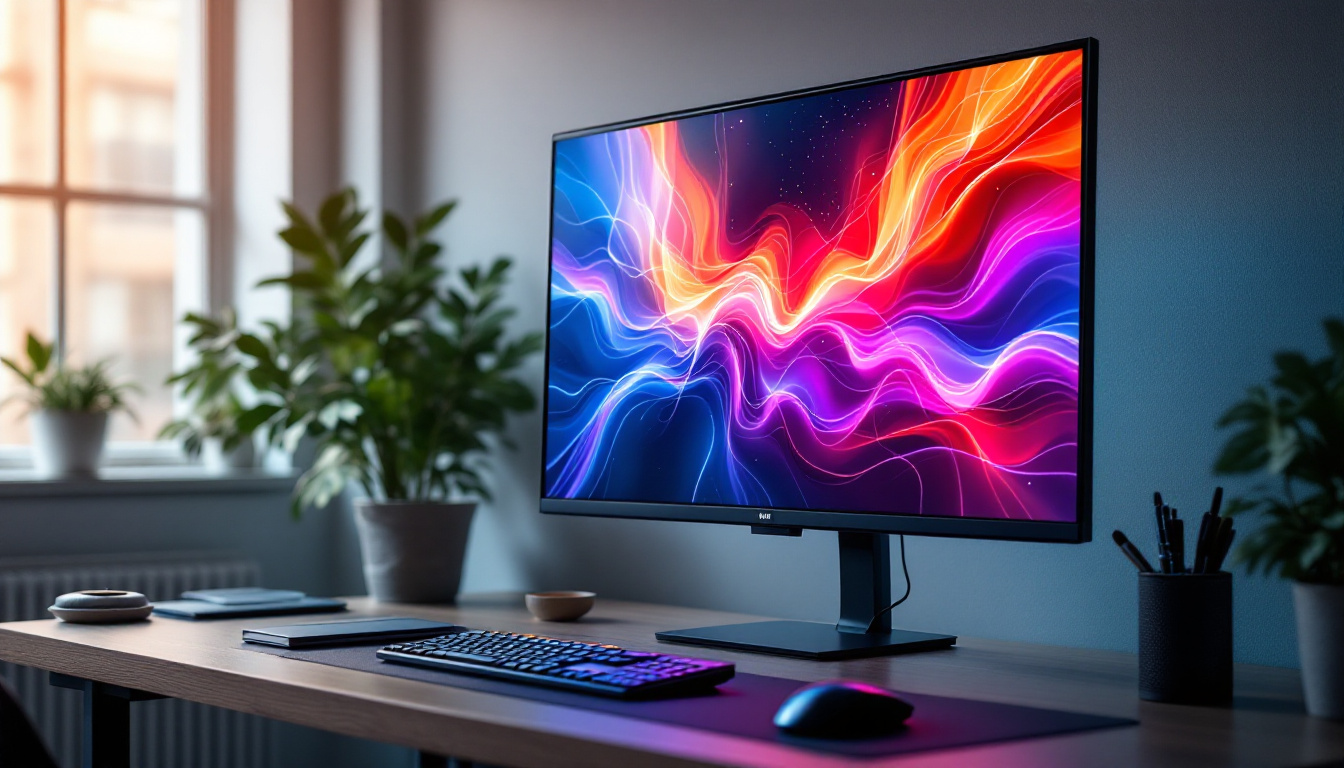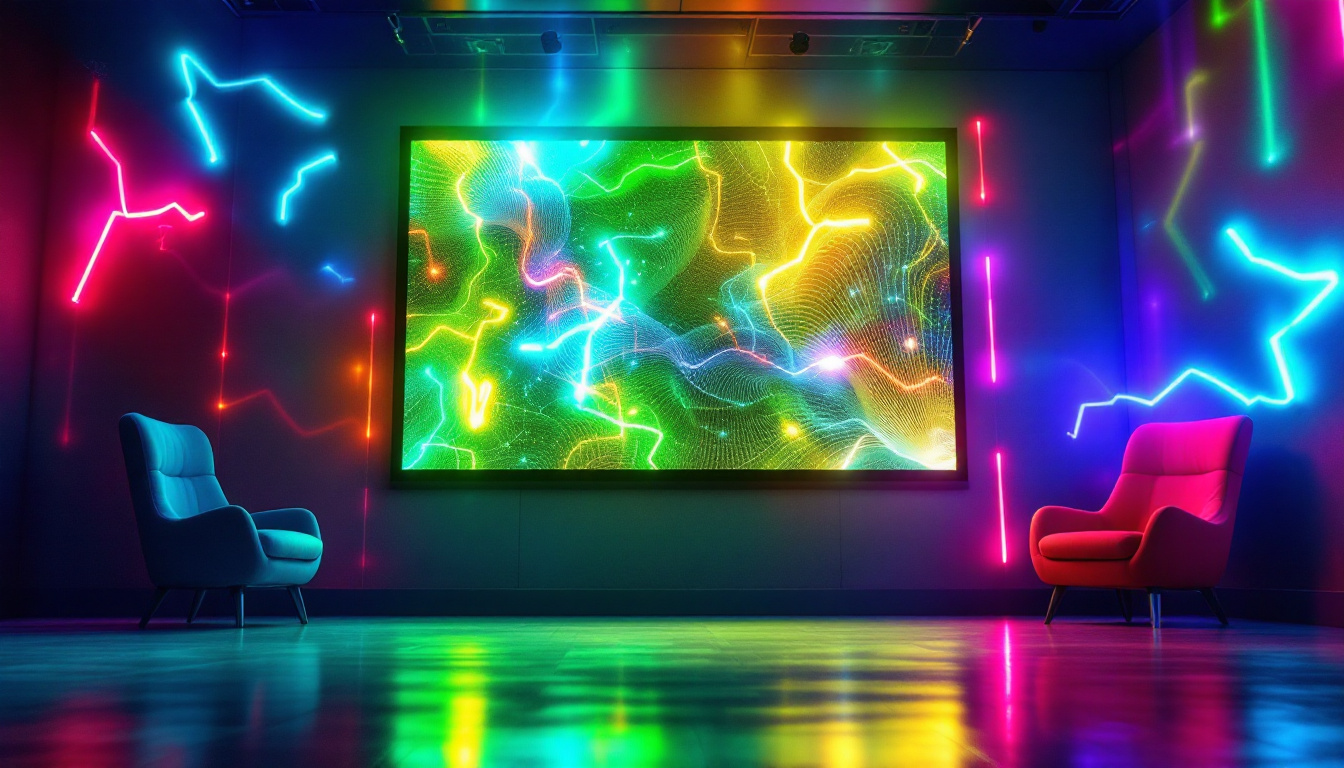In the realm of modern technology, LED displays have revolutionized the way information is presented. From advertising billboards to indoor television screens, the versatility and efficiency of LED displays have made them a preferred choice for various applications. One crucial aspect of LED displays that often goes unnoticed is wall width. This article delves into the significance of wall width in LED displays, exploring its impact on performance, installation, and overall user experience.
Understanding LED Displays
Before diving into the specifics of wall width, it is essential to understand what LED displays are and how they function. LED, or Light Emitting Diode, displays utilize semiconductor technology to emit light when an electric current passes through them. This technology allows for vibrant colors, high brightness, and energy efficiency, making LED displays ideal for a wide range of applications. The versatility of LED displays also contributes to their popularity, as they can be used in everything from digital billboards to intricate art installations. Their ability to produce bright, clear images even in direct sunlight sets them apart from traditional display technologies.
Types of LED Displays
LED displays come in various types, each designed for specific uses. The most common types include:
- Direct View LED Displays: These are large screens made up of individual LED modules that can be arranged to create a seamless display. They are often used in outdoor advertising and large venues.
- LED Video Walls: Composed of multiple smaller screens, LED video walls can be configured in various sizes and shapes, making them suitable for concerts, conferences, and retail environments.
- Indoor LED Displays: Typically used in shopping malls, airports, and corporate settings, these displays are designed for close viewing and offer high resolution.
Each type of LED display has its own specifications, including pixel pitch, brightness, and resolution, which all play a role in how effective the display will be in its intended environment. For instance, pixel pitch, which refers to the distance between the centers of two adjacent pixels, is crucial for determining the clarity of the image. A smaller pixel pitch results in a higher resolution, making it ideal for indoor displays where viewers are closer. Moreover, advancements in LED technology have led to the development of flexible LED displays that can be bent or shaped to fit unique spaces, further expanding the creative possibilities for designers and advertisers alike.
The Importance of Wall Width
Wall width refers to the physical dimensions of the wall on which an LED display is mounted. This aspect is often overlooked during the planning and installation phases, yet it has significant implications for both functionality and aesthetics.
Impact on Viewing Experience
The wall width determines how the LED display will be perceived by viewers. A display that is too small for the wall can appear lost, while one that is too large may overwhelm the space. The ideal wall width should complement the size of the display, ensuring that it is both visually appealing and functional.
Moreover, the distance between the viewer and the display is crucial. A larger wall width allows for a bigger display, which can enhance visibility from a distance. Conversely, a narrow wall may restrict the size of the display, limiting its effectiveness in larger venues. This is particularly important in environments such as auditoriums or conference halls, where the audience may be seated far from the screen. An appropriately sized display on a well-proportioned wall can create an immersive experience, drawing viewers in and keeping their attention focused on the content being presented.
Installation Considerations
When planning the installation of an LED display, wall width is a critical factor. The structural integrity of the wall must be assessed to ensure it can support the weight of the display. Additionally, the installation process may require specific mounting hardware that is compatible with the wall’s dimensions.
Furthermore, wall width can affect the placement of additional equipment, such as speakers or lighting. Proper planning ensures that all components work harmoniously together, providing a cohesive viewing experience. For instance, if the wall is too narrow, it may not accommodate the necessary audio-visual equipment, leading to subpar sound quality or lighting that fails to enhance the display. Additionally, the wall’s width can influence the overall design aesthetic of the space, as wider walls may allow for creative framing or integration of the display into the surrounding architecture, making it a focal point rather than an afterthought.
Beyond the technical aspects, wall width also plays a role in the overall ambiance of the room. A well-proportioned wall can create a sense of balance and harmony, making the environment more inviting. For example, in a retail setting, a wide wall with a large LED display can attract customers and create a dynamic shopping experience, showcasing promotions or new products effectively. In contrast, a cramped space with a small display may fail to engage customers, leading to missed opportunities for interaction and sales. Therefore, careful consideration of wall width not only enhances the functionality of the display but also contributes to the overall atmosphere of the space.
Choosing the Right Wall Width
Selecting the appropriate wall width for an LED display involves several considerations, including the intended use, location, and audience size. Each factor plays a vital role in determining the optimal dimensions for the display.
Intended Use
The purpose of the LED display significantly influences the choice of wall width. For instance, a display intended for advertising in a busy shopping district may require a larger wall width to accommodate a bigger screen that captures the attention of passersby. In contrast, a display used for corporate presentations in a conference room may benefit from a more modest wall width that fits the room’s dimensions.
Location and Environment
Where the display will be installed is another critical consideration. Outdoor displays often require sturdier walls to withstand environmental factors, such as wind and rain. Indoor displays, on the other hand, may have more flexibility in wall width, as they are not subjected to the same external pressures.
Additionally, the lighting conditions in the installation environment can affect the choice of wall width. A well-lit area may require a larger display to ensure visibility, while a dimly lit space may allow for a smaller screen without sacrificing effectiveness.
Technical Specifications Related to Wall Width
When discussing wall width in the context of LED displays, it is essential to consider various technical specifications that directly relate to the display’s performance.
Pixel Pitch
Pixel pitch refers to the distance between the centers of adjacent pixels on an LED display. A smaller pixel pitch results in higher resolution and better image quality, making it ideal for closer viewing distances. When determining wall width, it is crucial to consider the pixel pitch, as it will influence the overall size of the display.
For example, a display with a small pixel pitch may require a larger wall width to accommodate a screen that provides optimal viewing quality. Conversely, a display with a larger pixel pitch may be effective on a narrower wall, but it may not deliver the same level of detail.
Brightness Levels
Brightness is another critical specification that should be considered when evaluating wall width. LED displays come with varying brightness levels, typically measured in nits. A higher brightness level is necessary for outdoor displays, where sunlight can wash out images. In contrast, indoor displays may require lower brightness levels, allowing for a more comfortable viewing experience.
When selecting wall width, it is essential to match the brightness level of the display with the intended environment. A display with high brightness may be overwhelming in a dimly lit room, while a low-brightness display may struggle to be seen in bright outdoor conditions.
Best Practices for LED Display Installation
To maximize the effectiveness of an LED display, adhering to best practices during installation is crucial. These practices ensure that the display performs optimally and meets the needs of its intended audience.
Pre-Installation Assessment
Before installation, conducting a thorough assessment of the installation site is essential. This includes evaluating the wall structure, measuring dimensions, and considering factors such as lighting and audience distance. A comprehensive assessment will help determine the ideal wall width and display size.
Professional Installation
Engaging professionals for the installation of LED displays is highly recommended. Experienced technicians can ensure that the display is mounted securely and that all technical specifications are met. They can also provide valuable insights into the optimal wall width and placement for the display.
Additionally, professional installation can help avoid common pitfalls, such as misalignment or inadequate support, which can compromise the display’s performance and longevity.
Future Trends in LED Display Technology
The world of LED display technology is constantly evolving, with new innovations emerging regularly. As technology advances, so too will the considerations surrounding wall width and installation.
Increased Customization
Future LED displays are expected to offer increased customization options, allowing users to tailor wall width and display size to their specific needs. This could include modular designs that enable seamless integration into various environments, enhancing versatility and functionality.
Enhanced Connectivity
As smart technology continues to advance, LED displays will likely incorporate enhanced connectivity features. This may include wireless capabilities that allow for easier installation and flexibility in display placement. Such advancements could reduce the constraints imposed by wall width, allowing for more creative installations.
Conclusion
In summary, wall width is a critical factor in the effective installation and performance of LED displays. Understanding its implications can lead to better decision-making regarding display size, placement, and overall user experience. As technology continues to evolve, staying informed about the latest trends and best practices will ensure that LED displays remain a powerful tool for communication and engagement.
Whether for advertising, entertainment, or information dissemination, the right wall width can significantly enhance the impact of an LED display, making it a vital consideration for anyone looking to invest in this technology.
Discover LumenMatrix’s Advanced LED Display Solutions
Ready to elevate your space with the perfect LED display? LumenMatrix offers a comprehensive range of cutting-edge LED solutions tailored to your needs. From vibrant Indoor LED Wall Displays to dynamic Outdoor LED Wall Displays, and from mobile Vehicle LED Displays to interactive Floor LED Displays, our products are designed to captivate and engage. Experience the future of visual communication with our Custom LED Displays, All-in-One LED Displays, and LED Transparent Displays. Check out LumenMatrix LED Display Solutions today and transform your message into an unforgettable visual experience.


